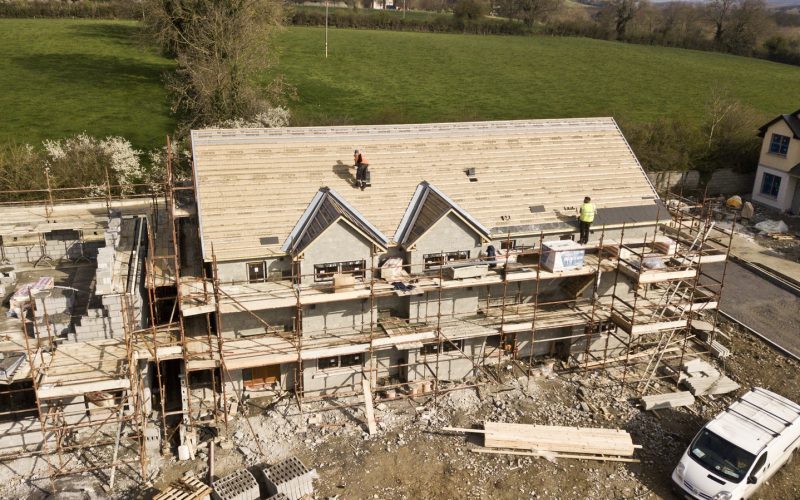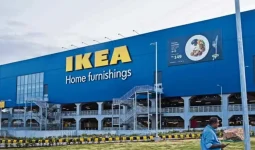If you’re thinking about remodeling your house, one of the most important decisions is what type of roofing system to get.
Many types of roofing systems are available, each with benefits and drawbacks depending on your home and location.
These benefits and drawbacks can influence how long your roof lasts, how much energy it takes to run your air conditioning system, how much money you’ll spend on repairs and replacements, and more.
What Is a Roofing System?
A roofing system is the topmost layer of a building, protecting the structure and its contents from the elements.
The three main types of roofing systems are pitched, flat, and green. Pitched roofs are the most common type in North America, while flat roofs are more prevalent in Europe and Asia.
Green roofs are a newer type of roofing system that is becoming more popular due to their environmental benefits.
The three main types of roofing systems are pitched, flat, and green. Pitched roofs are the most common type in North America, while flat roofs are more prevalent in Europe and Asia.
Green roofs are a newer type of roofing system that is becoming more popular due to their environmental benefits.
Different Types of Roofing Systems
1. Asphalt Roof Shingles
Asphalt roof shingles are one of the most popular types of roofing systems for both residential and commercial properties.
They are made from a fiberglass mat coated with asphalt and then covered with ceramic granules.
Asphalt roof shingles are durable, fire-resistant, and easy to install. They also come in various colors to match your home or business’s exterior.
2. Metal Roofing
This is another popular type of system, especially for commercial properties.
Metal roofs are long-lasting, low-maintenance, and energy-efficient. They are also fire-resistant and can withstand high winds.
A metal roof is a durable, long-lasting roofing system that can withstand extreme weather conditions. It is also energy-efficient, reflects heat, and helps reduce cooling costs.
Metal roofs are available in various colors and styles to match any home or business.
They do not need the same level of maintenance as other roofing systems and may be warrantied for up to 50 years.
3. Rubber Membrane
There are two types of rubber membrane roofs: thermoplastic olefin (TPO) and ethylene propylene diene monomer (EPDM).
TPO is made from polypropylene and polyethylene, while EPDM is made from synthetic rubber.
Both types of rubber membrane roofs are white, which helps reflect heat away from the building and keep energy costs down.
Both systems’ lifespans are about 50 years or more when properly installed and maintained.
Rubber roof membranes have minimal air leakage, so they work well in cold climates where snow can pile up on the roof.
They also come with extended warranties against leaks or tears and will last longer than most other roofing materials without needing to be replaced.
These systems’ drawbacks include their weight-heavy rubber requiring additional framing for installation, which can make them costly to install over large areas.
They cannot be walked on without adding a durable overlay, and the seams might leak when exposed to freezing temperatures or high amounts of rainfall.
4. Clay Tile
One of the most popular types of roofing systems is the clay tile roof.
This system comprises interlocking tiles placed on each other to create a watertight seal. Clay tile roofs are known for their durability and long lifespan.
They are also low-maintenance, fire-resistant, and can withstand high winds.
However, this type of roof is not cheap and may be more expensive than other options, such as metal or concrete.
5. Closed Layer Shingle
Closed-layer shingle roofs consist of asphalt shingles installed in an overlapping pattern from the bottom up to prevent moisture from penetrating.
Closed-layer shingle roofs have an advantage over metal because they provide a quieter surface for walking and will last longer than metal if adequately maintained.
They also provide reasonable protection against leakage problems caused by ice dams in cold climates and wind uplift pressure caused by high winds.
However, closed-layer shingle roofs need regular maintenance, including caulking between the joints where two rows meet.
6. Composite Roofing
Composite roofing is a mix of asphalt and fiberglass, providing a durable surface. It’s also flexible, so it can resist cracking from weather changes. It’s also lightweight and easy to install.
This is among the types of roofing systems available in various colors to match your home’s exterior.
The only downside to composite or rubber roofs is that they’re more expensive than traditional shingle roofs.
If you’re looking for something affordable, consider tile roofing. Tile roofs have been used for centuries because they’re versatile, affordable, and available in plenty of colors.
They’re heavy enough that water doesn’t pool on them but light enough that the installation doesn’t require professional help.
7. Slate Roof
Slate roofs are made from natural materials used for centuries because they require minimal maintenance and will last for generations.
They are beautiful and distinctive, and they also have insulation properties that help keep homes cool in summer.
A slate roof is a durable, long-lasting roofing option. If installed properly, it can last 100 years or more. Slate roofs are also fire-resistant and offer good protection against high winds.
One downside to slate roofs is that they can be expensive to install. However, the beauty and durability of a slate roof make it worth the investment.
Conclusion
Pitched roofs are the most common in residential settings. They are easy to construct and provide adequate drainage.
Flat roofs, on the other hand, are popular in commercial applications because they offer more space.
Metal roofs are durable and low maintenance, making them a good choice for commercial and residential properties.
Tile roofs are also popular, especially in warm climates. They are long-lasting but can be expensive to install.
As you can see, there are many different types of roofing systems to choose from. Each has its benefits and drawbacks.
Do research before deciding which type of roof is right for your home or business.








